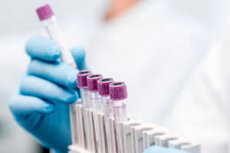
在最近发表于《自然通讯》杂志的一项研究中,英国研究人员采用观察性和遗传学方法,对英国生物样本库的参与者进行了1463种血浆蛋白与19种癌症之间的联系分析。他们发现了618种蛋白质-癌症关联和317种癌症生物标志物,其中包括107例在癌症诊断前七年内发现的病例。
蛋白质在大多数生物过程中发挥着关键作用,包括癌症发展,其中一些是已知的癌症风险因素或生物标志物。尽管先前的研究已经鉴定出与癌症相关的单个蛋白质,但新的多重蛋白质组学方法能够同时大规模评估蛋白质,特别是那些在癌症风险背景下尚未探索的蛋白质。
前瞻性研究因混杂因素和偏倚而面临挑战,但影响蛋白质水平的遗传变异提供了额外的证据。遗传预测因子,尤其是顺式pQTL(蛋白质数量性状位点),为蛋白质与癌症之间的关联提供了强有力的证据。整合观察性和遗传学方法,可以提高识别可能与癌症发生发展存在因果关系的蛋白质的可能性。
这种综合方法有助于更好地理解癌症生物学,确定治疗靶点,并发现诊断性生物标志物。因此,在本研究中,研究人员采用了一种整合的多组学策略,结合前瞻性队列和外显子组分析,以识别可能与癌症病因相关的蛋白质。
该研究使用了来自英国生物样本库的数据,该样本为一个前瞻性队列,纳入了44,645名39-73岁成年人(排除后),中位随访期为12年。参与者接受了包括问卷调查、体格测量和血样采集在内的评估。使用Olink近距离延伸分析法对血浆样本进行了分析,以定量1463种蛋白质。癌症和死亡登记数据是通过与国家登记机构的链接获得的。外显子组测序数据用于研究蛋白质水平与遗传相关性。
结果与讨论:观察性分析纳入了4921例癌症病例,中位年龄为66.9岁。与总体分析样本相比,患癌症的人年龄更大、成瘾程度更高,并且有癌症家族史。患癌症的女性子女数量较少、月经初潮较早、绝经后状态较高、使用激素替代疗法且未使用口服避孕药。
共有371种蛋白质与至少一种癌症类型的风险显著相关,从而得出618种蛋白质-癌症关联。其中304种关联与在候选癌源组织或细胞中mRNA表达富集的蛋白质相关。大多数关联发现于与B细胞或T细胞中mRNA高表达的血液系统癌症相关的蛋白质,但也发现与在其他各种组织中mRNA高表达的蛋白质存在关联,例如肝脏、肾脏、脑、胃、肺、结肠、食道和子宫内膜。
血液系统恶性肿瘤,包括非霍奇金淋巴瘤 (NHL)、弥漫大 B 细胞非霍奇金淋巴瘤 (DLB 细胞非霍奇金淋巴瘤)、白血病和多发性骨髓瘤,占已发现关联的一半以上。
显著相关性包括:TNFRSF13B 和 SLAMF7 与多发性骨髓瘤风险相关,PDCD1 和 TNFRSF9 与非霍奇金淋巴瘤风险相关,FCER2 和 FCRL2 与白血病风险相关。此外,已发现肝癌(例如 IGFBP7 和 IGFBP3)、肾癌(例如 HAVCR1 和 ESM1)、肺癌(例如 WFDC2 和 CEACAM5)、食管癌(例如 REG4 和 ST6GAL1)、结直肠癌(例如 AREG 和 GDF15)、胃癌(例如 ANXA10 和 TFF1)、乳腺癌(例如 STC2 和 CRLF1)、前列腺癌(例如 GP2、TSPAN1 和 FLT3LG)、子宫内膜癌(例如 CHRDL2、KLK4 和 WFIKKN1)以及卵巢癌(例如 DKK4 和 WFDC2)也存在相关性。
胰腺癌、甲状腺癌、黑色素瘤以及唇癌和口腔癌的关联性较低。通路分析表明,适应性免疫反应可能在血液系统癌症中发挥作用。按性别对关联性进行分层后,发现异质性极小。
共计107个蛋白质与癌症的关联在采血七年后仍然显著,其中29个关联得到基因分析的支持。此外,4个关联得到了长期数据(>7年)以及包括顺式pQTL和外显子组蛋白质遗传评分(exGS)在内的分析的支持:NHL与CD74和TNFRSF1B相关,白血病与ADAM8相关,肺癌与SFTPA2相关。研究结果确定了38种与癌症风险相关的蛋白质,这些蛋白质也是目前已获批准药物的靶点,这表明它们具有降低癌症风险的治疗潜力。
虽然这是迄今为止规模最大的关于循环蛋白与癌症关系的队列研究,但分析仅限于基线蛋白水平,这可能导致由于均值偏倚回归而低估风险。此外,该研究对于罕见癌症和代表性不足的人群的检验效力有限,需要在不同的队列中开展进一步研究。
总而言之,该研究发现了血液蛋白与癌症风险之间的若干关联,其中许多关联在癌症确诊前七年就已检测到。基因分析证实了它们在癌症发展中的潜在作用。此外,这些发现可能有助于识别有助于在高危人群中早期发现癌症分期的蛋白质,从而为早期诊断和改善患者预后提供有前景的生物标记物。

